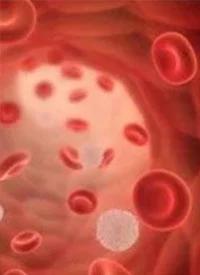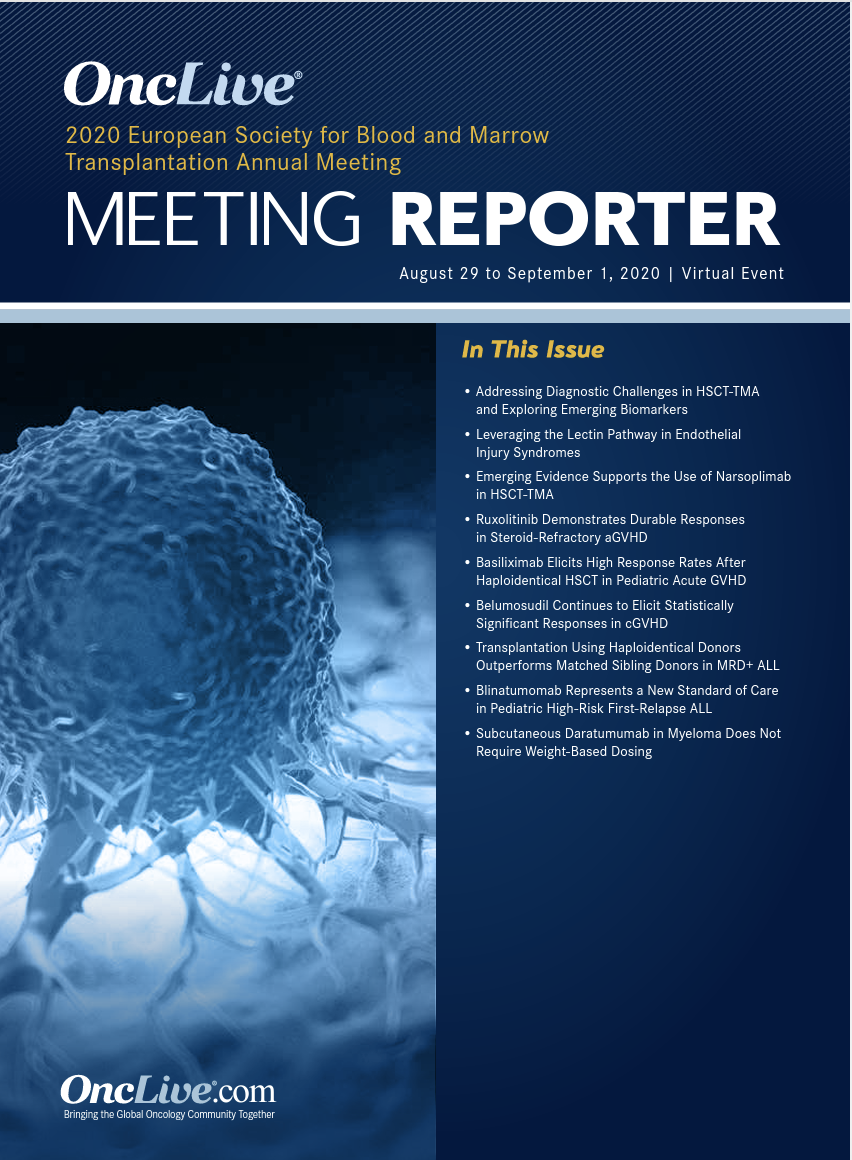Publication
Article
Basiliximab Elicits High Response Rates After Haploidentical HSCT in Pediatric Acute GVHD
Author(s):
Basiliximab proved to be an effective second-line treatment option for pediatric patients with steroid-refractory acute graft-versus-host disease that developed following haploidentical hematopoietic stem cell transplantation.

Basiliximab proved to be an effective second-line treatment option for pediatric patients with steroid-refractory (SR) acute graft-versus-host disease (aGVHD) that developed following haploidentical hematopoietic stem cell transplantation (haplo-HSCT), according to results from a retrospective analysis presented during the 2020 European Society for Blood and Marrow Transplantation Meeting.
Results showed an overall response rate (ORR) of 85% in 95 patients who received basiliximab following haplo-HSCT; this was comprised of a complete response (CR) rate of 74.7% (n = 71), and a partial response (PR) rate of 11.6% (n = 11). No response was observed in 15% (n = 15) of patients. Among 5 pediatric patients undergoing this treatment who also received donor-derived isoagglutinin, 60% (n = 3) achieved a CR at day 28, while 40% (n = 2) did not show a response.
“The standard second-line agent for the treatment of [patients with] steroid-refractory aGVHD has remained unclear with no consensus reached,” according to senior author, Yu Wang, MD, Assistant Professor, Stem Cell Transplant, of the Peking University Institute of Hematology Peking University People’s Hospital in Beijing, China. “Prior studies on basiliximab after haplo-HSCT have almost always focused on adult patients or have lacked a distinction between adult and pediatric patients; thus, no data are available on basiliximab as a treatment for pediatric patients with SR aGVHD following HSCT.”
In the retrospective review, investigators looked at data from 100 pediatric patients who received basiliximab after haplo-HSCT between January 2015 and December 2017. Fifty-seven percent of patients had grade II SR-aGVHD, 27% had grade III disease, and 16% had grade IV disease. Patients received a median of 4 doses (range, 2-9) of basiliximab.
Evaluation of the response at day 28 according to the grade of aGVHD in basiliximab-treated patients showed that 89.5% of patients (n = 51) with grade II aGVHD achieved CR and 5.3% (n = 3) experienced a PR. In the grade III cohort, 66.7% of patients (n = 18) had a CR and 22.2% of patients (n = 6) experienced a PR. Lastly, in the group with grade IV disease, CR and PR were achieved by 31.3% (n = 5) and 12.5% (n = 2) of patients, respectively.
No response was observed in 5.3% (n = 3), 11.1% (n = 3), and 56.3% (n = 9) of patients treated with basiliximab who had stages II, III, and IV SR-aGVHD, respectively.
Patients with skin SR-aGVHD experienced the greatest benefit from basiliximab; in this cohort, the ORR was 94.6%. Basiliximab elicited an ORR of 81.6% in patients with gut SR-aGVHD and 66.7% in those with liver SR-aGVHD.
Patients who responded to basiliximab experienced improved outcomes compared with non-responders. The 3-year overall survival rates were 81.3% in responding patients compared with 46.7% in non-responders (P < .001). Responding patients experienced a disease-free survival rate of 79.0% compared with 46.7% in non-responders (P = .001).
Moreover, those who experienced a response to treatment had a lower non-relapse mortality rate compared with those who did not respond, at 6.1% versus 33.3% (P < .001), respectively. Responders had a relapse rate of 14.9% versus 20.0% in non-responders (P = .46).
Regarding infectious complications, bacterial infections occurred in 11% of patients and presumed or documented fungal infections were observed in 7%. Most patients experienced viremia; 53% of patients had cytomegalovirus viremia, 11% had Epstein-Barr virus viremia, 7% had Human Herpes virus-6 viremia, and 1% of patients had Herpes-simplex virus viremia.
“Basiliximab is an effective second-line agent for pediatric patients with SR-aGVHD after haplo-HSCT, particularly for skin SR-aGVHD,” the authors concluded.
Reference:
- Tang F-F, Cheng Y-F, Xu L-P, et al. Basiliximab as treatment of steroid-refractory acute graft-versus-host disease in pediatric patients after haploidentical hematopoietic stem cell transplantation. Presented at: 2020 European Society for Blood and Marrow Transplantation Annual Meeting; August 20-September 2, 2020; Virtual. Abstract A227. https://bit.ly/2F1diLo.










